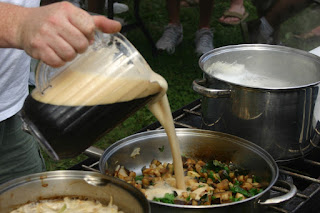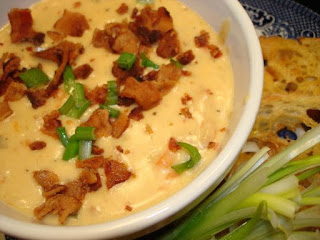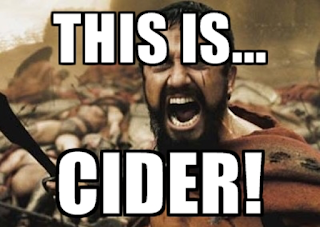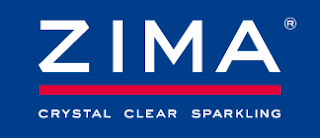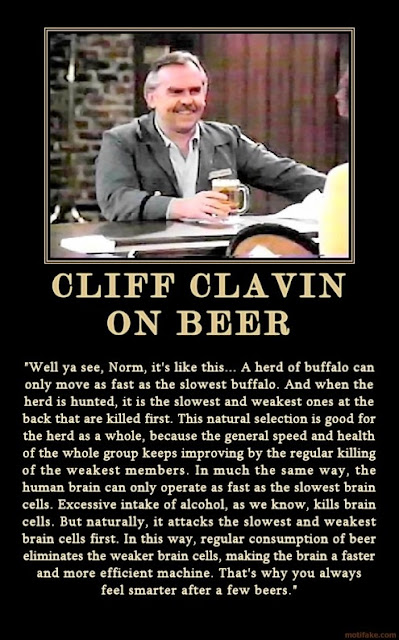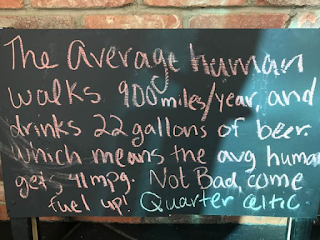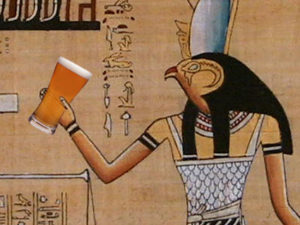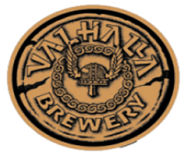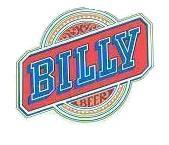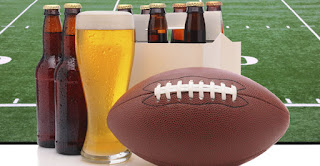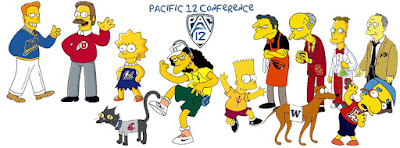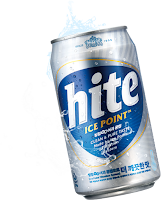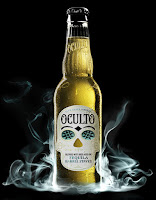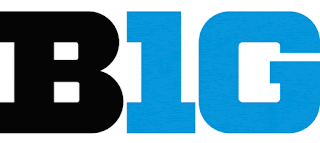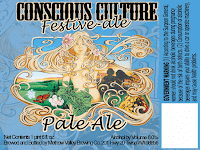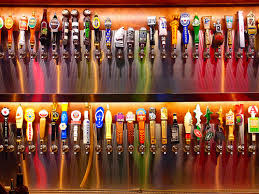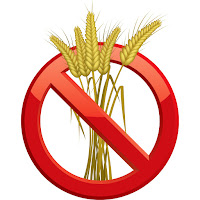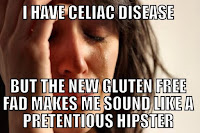|
2017 Bowl Watching and Brewery Tour Guide
|
|
Celebration Bowl – Atlanta, GA
|
|
NC Central
|
Grambling (-15.5)
|
|
December 17
|
12 noon ABC
|
|
Local brewery: Eventide Brewing is a great in-town brewery. They’re brewing some great stuff right now. If the weather is cold, try a Snowpocalypse, Red Headed Haley, or Highlander.
|
|
|
|
New Mexico Bowl – Albuquerque, NM
|
|
UT-San Antonio
|
New Mexico (-7)
|
|
December 17
|
2:00 PM ESPN
|
|
Local brewery: I haven’t sampled any of these yet, but Tractor Brewing Company is very close to the stadium. Albuquerque has an emerging beer scene, and I would love to try a beer call Turkey Drool!
|
|
|
|
Las Vegas Bowl – Las Vegas, NV
|
|
Houston (-3.5)
|
San Diego State
|
|
December 17
|
3:30 PM ABC
|
|
Local brewery: Banger Brewing is a newer destination near Vegas’ old Fremont Street section. What happens in Vegas stays in Vegas, but I’d love it if you could bring me a Punk’d – Spiced Belgian Dubbel.
|
|
|
|
Cure Bowl – Orlando, FL
|
|
Arkansas State
|
Central Florida (-6)
|
|
December 17
|
5:30 PM CBS-SN
|
|
Local brewery: Dead Lizard – the name alone and potential for stellar merchandise make this place a must. A Pistachio Nut Brown Ale? Not sure what I think about that.
|
|
|
|
Camellia Bowl – Montgomery, AL
|
|
Appalachian State
|
Toledo (Pick)
|
|
December 17
|
5:30 PM ESPN
|
|
Local brewery: Guess where you can find Railyard Brewing Company … in an old railyard, and only a mile from the stadium. The Hotbox Honey Porter sounds especially fabulous.
|
|
|
|
New Orleans Bowl – New Orleans, LA
|
|
Southern Miss (-3.5)
|
Louisiana-Lafayette
|
|
December 17
|
9:00 PM ESPN
|
|
Local brewery: The Courtyard gets outstanding reviews and will be on my list next time I’m in the Big Easy. And I’d have to see if the Old Sleepyhead lives up to its name at 10.75% ABV.
|
|
|
|
Miami Beach Bowl – Miami, FL
|
|
Central Michigan
|
Tulsa (-12)
|
|
December 19
|
2:30 PM ESPN
|
|
Local brewery: Before you head to the baseball stadium for the game, make sure to head to The Abbey Brewing Company. If you know me at all, you know I’d start with their quadruple – Brother Aaron’s.
|
|
|
|
Boca Raton Bowl – Boca Raton, FL
|
|
Memphis
|
Western Kentucky (-4)
|
|
December 20
|
7:00 PM ESPN
|
|
Local brewery: What’s more fun than a Barrel of Monks? I really don’t know how to answer that. But I’m completely a sucker for anything abbey-style. Once again – I go straight for the quad – Quadraphonic.
|
|
|
|
Poinsettia Bowl – San Diego, CA
|
|
BYU (-8.5)
|
Wyoming
|
|
December 21
|
9:00 PM ESPN
|
|
Local brewery: San Diego’s beer scene is so stupid good … I’ll skip the obvious like Stone and Ballast Point (both outstanding choices). I recommend Green Flash and their Dia de los Serranos Stout. Buckle up for this one.
|
|
|
|
Famous Idaho Potato Bowl – Boise, ID
|
|
Colorado State (-13.5)
|
Idaho
|
|
December 22
|
7:00 PM ESPN
|
|
Local brewery: Let’s face it; it’s going to be cold. There is no better way to brace yourself for the cold than a nice thick, heavy beer; Boise Brewing’s Dark Daisy Chocolate Milk Stout or Snowboarder Porter should do the trick.
|
|
|
|
Bahamas Bowl – Nassau Bahamas
|
|
Eastern Michigan
|
Old Dominion (-3.5)
|
|
December 23
|
1:00 PM ESPN
|
|
Local brewery: No – you don’t have to drink Red Stripe if you don’t want to. Check out Pirate Republic for a Black Beer’d Stout or Long John Pilsner. Love what they’re doing with their names! We still say “Hooray for beer!” though.
|
|
|
|
Armed Forces Bowl – Fort Worth, TX
|
|
Louisiana Tech
|
Navy (-1)
|
|
December 23
|
4:30 PM ESPN
|
|
Local brewery: So many great choices in the greater Dallas/ Ft Worth/ Arlington area. Try one that you may not have heard of: Rahr & Sons gets rave reviews. The Ugly Pug Black, Buffalo Butt, and Iron Thistle sound fantastic.
|
|
|
|
Dollar General Bowl – Mobile, AL
|
|
Ohio
|
Troy (-3.5)
|
|
December 23
|
8:00 PM ESPN
|
|
Local brewery: There aren’t many breweries in south Alabama … yet. But just across Mobile Bay lies Fairhope’s eponymous brewery. It’s worth the drive. Try the Cinco Uno for some spice or ‘I Drink Therefore I Amber’ for something nice and smooth.
|
|
|
|
Hawai’i Bowl – Honolulu, HI
|
|
Middle Tennessee State
|
Hawai’i (No line)
|
|
December 24
|
8:00 PM ESPN
|
|
Local brewery: If you can tear yourself away from the beach and drinks with umbrellas in them, give Honolulu Beer Works a try. Their 2016 Anniversary Ale (a barleywine aged in Cabernet Sauvignon AND bourbon barrels) might be worth the entire trip!
|
|
|
|
St. Petersburg Bowl – St. Petersburg, FL
|
|
Miami (OH)
|
Mississippi State (-12)
|
|
December 26
|
11:00 AM ESPN
|
|
Local brewery: I was ‘on’ my high school soccer team, but mostly on the bench. Here’s a bench I’d prefer to be on: Green Bench Brewery. They have one called Russian Mail Order Bride. I’d have to get that just for the fun of it.
|
|
|
|
Quick Lane Bowl – Detroit, MI
|
|
Maryland (-2)
|
Boston College
|
|
December 26
|
2:30 PM ESPN
|
|
Local brewery: I’m biased here. I have a shirt from Batch Brewing Company in Detroit that simply says “Beer makes me happy.” Thanks to WWK and GM for that gift. They’ve currently got a huge selection; so while you’re checking out their merchandise, have a Milk Goblin or Frodo Lives.
|
|
|
|
Independence Bowl – Shreveport, LA
|
|
Vanderbilt
|
NC State (-4)
|
|
December 26
|
5:00 PM ESPN2
|
|
Local brewery: Between Shreveport’s Boardwalk and Independence Stadium is the Red River Brewing Company. They serve mostly beers on the lighter side of things: Heliopolis German Lager and Penalty Bock sound like great tailgating beers.
|
|
|
|
Heart of Dallas Bowl – Dallas, TX
|
|
Army
|
North Texas (-9.5)
|
|
December 27
|
12 Noon ESPN
|
|
Local brewery: I’ve had some Deep Ellum and have never been disappointed. The Local Legend, Pale, and Neato Bandito are well worth it. If you’re more adventurous, swing for the Numb Comfort or Four Swords, and make sure someone else is driving.
|
|
|
|
Military Bowl – Annapolis, MD
|
|
Wake Forest
|
Temple (-13)
|
|
December 27
|
3:30 PM ESPN
|
|
Local brewery: There is no real choice here (mostly because Annapolis isn’t into the craft brew scene yet), so try Chesapeake Brewing Company. I love nothing more than a good rivalry that never dies. To have a beer called ‘Beat Army Golden Lager’ makes me smile to my very core. Go Navy! Beat Army!
|
|
|
|
Holiday Bowl – San Diego, CA
|
|
Washington State (-6.5)
|
Minnesota
|
|
December 27
|
7:00 PM ESPN
|
|
Local brewery: Continuing our tour of the amazing San Diego beer scene, we now head over to Mission Brewery. I mean, you’re near the home of the Padres, Mission just makes sense. Dark Seas Russian Imperial Stout looks like a winner.
|
|
|
|
Cactus Bowl – Phoenix, AZ
|
|
Baylor
|
Boise State (-8)
|
|
December 27
|
10:15 PM ESPN
|
|
Local brewery: Just a mile from the stadium, Mother Bunch is a great place to go and get your game face on. Start with Fresh Hop Blonde; move to the Cherry Popper Porter and finish with a smooth Nitro Oatmeal Chocolate Milk Stout.
|
|
|
|
Pinstripe Bowl – Bronx, NY
|
|
Northwestern
|
Pittsburgh (-5)
|
|
December 28
|
2:00 PM ESPN
|
|
Local brewery: Going to a game at Yankee Stadium in the Bronx? Gotta start at The Bronx Brewery! True to baseball themes, try the On the Black Pale or Say Hey Saison.
|
|
|
|
Russell Athletic Bowl – Orlando, FL
|
|
West Virginia
|
Miami (-3)
|
|
December 28
|
5:30 PM ESPN
|
|
Local brewery: A brand new player to the game, check out Ocean Sun Brewing. I have to admit, I’m very intrigued by Westende – a marriage of a Belgian Tripel and an American IPA. If not that, the Dark Helmet Schwarzbier will do quite nicely.
|
|
|
|
Foster Farms Bowl – Santa Clara, CA
|
|
Indiana
|
Utah (-8)
|
|
December 28
|
8:30 PM FOX
|
|
Local brewery: When in the Golden State, why not visit the Golden State Brewery? Looking at their current selection, I would opt to stay lighter and go with the Golden Gate Red, Heritage Honey and Pear Pilsner.
|
|
|
|
Texas Bowl – Houston, TX
|
|
Kansas State
|
Texas A&M (-2)
|
|
December 28
|
9:00 PM ESPN
|
|
Local brewery: There are several good breweries in Houston, but Saint Arnold is the clear winner, according to most publications. They have a new Winter Seasonal called White Noise – a Belgian-style Wit. Or, if you can find it, they have Bishop’s Barrel #16 – a Dubbel aged in red wine barrels. Yum.
|
|
|
|
Birmingham Bowl – Birmingham, AL
|
|
South Florida (-10.5)
|
South Carolina
|
|
December 29
|
2:00 PM ESPN
|
|
Local brewery: In Birmingham, you’ll run into plenty of Good People, hence the name of the brewery. Try an El Gordo if you’re in for a party on the taste buds. If you’re into super IPA IPA’s, give the Snake Handler a whirl, clocking in at 10% ABV and IBUs over 100!
|
|
|
|
Belk Bowl – Charlotte, NC
|
|
Arkansas
|
Virginia Tech (-7)
|
|
December 29
|
5:30 PM ESPN
|
|
Local brewery: Ok, so it isn’t Asheville – No Da! So, might as well try NoDa Brewing Company. If it’s still there, have a Gordgeous Pumpkin Ale; if not – get the Cold Crash Winter Ale.
|
|
|
|
Alamo Bowl – San Antonio, TX
|
|
Oklahoma State
|
Colorado (-3)
|
|
December 29
|
9:00 PM ESPN
|
|
Local brewery: Ranger Creek Brewery & Distillery is a great choice if you have some amazingly bizarre friends that don’t want beer. They can spend time in the distillery portion. For beer enthusiasts, try the Red Headed Stranger or, if you’re feeling froggy, La Bestia – Spanish for ‘The Beast.’
|
|
|
|
Liberty Bowl – Memphis, TN
|
|
TCU
|
Georgia (-1)
|
|
December 30
|
12 Noon ESPN
|
|
Local brewery: As funky, cool, and awesome as Elvis, Wiseacre Brewing Company has some seriously good beer and some seriously cool looking cans. Gotta Get Up to Get Down coffee milk stout and Gemütlichkeit (pronunciation optional) Oktoberfest are winners.
|
|
|
|
Sun Bowl – El Paso, TX
|
|
North Carolina
|
Stanford (-3)
|
|
December 30
|
2:00 PM CBS
|
|
Local brewery: Deadbeach Brewery gets a perfect five stars online. If it’s on the interwebs, it must be true! I would go straight for the Vaquero Amber; or maybe the Winter Solstice Ale. Let me know what you think …
|
|
|
|
Arizona Bowl – Tucson, AZ
|
|
South Alabama
|
Air Force (-13)
|
|
December 30
|
5:30 PM ASN/ CI
|
|
Local brewery: When in Tucson, head for the Borderlands! For something light and delicious, start with the Prickly Pear Wheat; move onto the Smoke Irons (with smoky mesquite flavor) and then finish with a smooth Noche Dulce Vanilla Porter.
|
|
|
|
Music City Bowl – Nashville, TN
|
|
Nebraska
|
Tennessee (-3)
|
|
December 30
|
3:30 PM ESPN
|
|
Local brewery: Lots of good choices in Nashville but this is a no-brainer for me. I had a Yazoo Brewing Gerst Amber this summer and it blew my mind. Fully phenomenal. If you go and have to try something else (can’t imagine why), try Sue, described as a “smoky malt bomb of a beer.”
|
|
|
|
Orange Bowl – Miami Gardens, FL
|
|
Florida State
|
Michigan (-7)
|
|
December 30
|
8:00 PM ESPN
|
|
Local brewery: In this part of Miami, it’s all about the Funky Buddha. If you need breakfast in a bottle during your trip, try the Maple Bacon Coffee Porter, which is quiet good despite balancing all of those flavors. If you’re looking lighter, go with the Floridian Hefeweizen – one of the best wheat beers I’ve ever had.
|
|
|
|
Citrus Bowl – Orlando, FL
|
|
LSU (-3.5)
|
Louisville
|
|
December 31
|
11:00 AM ABC
|
|
Local brewery: Ten10 currently has 18 beers on tap. Eighteen! To that I say, “Challenge accepted.” I don’t know if I’d start with the Safe Bet (Imperial Belgian Stout), BA Cowkilla (Makers Mark Imperial Milk Stout), Ampelos (Barleywine with wine must), or Ebenezer (Holiday Abbey Ale.) I guess I’ll have to have one of each. And then call Über.
|
|
|
|
TaxSlayer Bowl – Jacksonville, FL
|
|
Kentucky
|
Georgia Tech (-4)
|
|
December 31
|
11:00 AM ESPN
|
|
Local brewery: Jacksonville is a great town – and has breweries all the way down to St Augustine. Right near the stadium and the Landing is Intuition Ale Works. It’s another place that has tons of options on tap. I’d recommend the Dubbel Helix, Shotgun Shack, or Barrel-Aged Noir Belgian.
|
|
|
|
Peach Bowl – Atlanta, GA
|
|
Alabama (-15.5)
|
Washington
|
|
December 31
|
3:00 PM ESPN
|
|
Local brewery: The Peach Bowl is an institution in Atlanta, as are Chick Fil A and Red Brick Brewing. Divine Bovine, Vanilla Gorilla and 3 Bagger are all great beers. But, for my money, you cannot beat the Laughing Skull.
|
|
|
|
Fiesta Bowl – Glendale, AZ
|
|
Clemson
|
Ohio State (-3.5)
|
|
December 31
|
7:00 PM ESPN
|
|
Local brewery: The stadium sits out somewhat in the middle of nowhere. But a great brewery is not too far away from there. Before this semifinal kicks off, go to Brewyard Beer Company for a Black Mamba Sunrise, Smoking Red Head Irish Red, or Sunday Morning Pale Ale.
|
|
|
|
Outback Bowl – Tampa, FL
|
|
Iowa
|
Florida (-2.5)
|
|
January 2, 2017
|
1:00 PM ABC
|
|
Local brewery: It’s an early kickoff, which only means you get to start tailgating super early – or have lots of time after the game. Downtown Tampa is home to Coppertail Brewing. Try Captain Jack’s Stone Crab Stout, Cryptid Imperial Stout, or Night Swim Porter.
|
|
|
|
Cotton Bowl – Arlington, TX
|
|
Western Michigan
|
Wisconsin (-7.5)
|
|
January 2, 2017
|
1:00 PM ESPN
|
|
Local brewery: You have two options in Arlington – go to Division Brewing or don’t. Yes, there are other breweries, but this is top of the line. I’d go with the Silk Jacket, Distant Cousin (Dark English Mid), or Big Ben Stout.
|
|
|
|
Rose Bowl – Pasadena, CA
|
|
USC (-7)
|
Penn State
|
|
January 2, 2017
|
5:00 PM ESPN
|
|
Local brewery: Like Glendale, the Rose Bowl doesn’t sit near lots of businesses. But Craftsman Brewery gets rave reviews. Holiday Spruce is perfect for this time of year. But the Aurora Borealis looks like an absolute star too.
|
|
|
|
Sugar Bowl – New Orleans, LA
|
|
Auburn
|
Oklahoma (-4.5)
|
|
January 2, 2017
|
8:30 PM ESPN
|
|
Local brewery: Since NOLA is a destination trip for most, I’ll break my rule and include something the requires a drive/ You just can’t beat Abita, about an hour away. Old standards like Turbodog, Andy Gator and Purple Haze await, as well as new favorites like the Abita Christmas. It’s worth the drive.
|
|
|
|
National Championship Game – Tampa, FL
|
|
TBD
|
TBD
|
|
January 9, 2017
|
8:30 PM ESPN
|
|
Local brewery: There’s really no debate here. Head on over to Cigar City Brewing Company and pick up some Jai Alai. If you like Creature Comforts Tropicalia, you should love it.
|
 With each, it seems that the news would be more bearable, and infinitely more entertaining, if we
With each, it seems that the news would be more bearable, and infinitely more entertaining, if we 
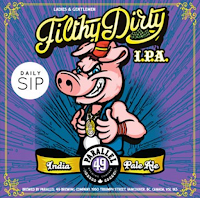 Water in Flint, Michigan is slightly dirtier than the floor in a Major League Baseball dugout.
Water in Flint, Michigan is slightly dirtier than the floor in a Major League Baseball dugout.

